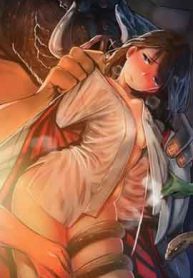

The scene was graphic enough that the film's director, B. The film borrows the concept of the "id monster" from the 1950s film Forbidden Planet, with the worm being a manifestation of the O'Connell character's fears. Arguably the most notorious example of tentacle rape to date, Corman directed a scene in which actress Taaffe O'Connell, playing an astronaut on a future space mission, is captured, raped, and killed by a giant, tentacled worm. Ī decade later, Corman would again use tentacle rape while producing Galaxy of Terror, released in 1980. Vice magazine identifies this as "perhaps cinema history's first tentacle-rape scene". B-movie producer Roger Corman used the concept of tentacle rape in a brief scene in his 1970 film The Dunwich Horror, a film adaptation of the H. The use of sexualized tentacles in live action films, while much rarer, started in American B-movie horror films and has since migrated to Japan. Maeda explained that he invented the practice to get around strict Japanese censorship regulations, which prohibit the depiction of the penis but apparently do not prohibit showing sexual penetration by a tentacle or similar (often robotic) appendage. In 1989, Toshio Maeda's manga Demon Beast Invasion created what might be called the modern Japanese paradigm of tentacle porn, in which the elements of sexual assault are emphasized. The volume of films in this genre has slowed from the peak years in the 1990s but continue to be produced to the present day. Numerous animated tentacle erotica films followed the next couple decades, with more popular titles such as 1986's Urotsukidoji, 1992's La Blue Girl and 1995's Demon Beast Resurrection becoming common sights in large video store chains in the United States and elsewhere. The first entirely non-hentai anime production portraying a tentacle assault would be 1986 anime OVA Guyver: Out of Control, where a female Chronos soldier named Valcuria (voiced by Keiko Toda) is enshrouded by the 2nd (damaged) Guyver unit that surrounds her in tentacle form and penetrates all orifices.

The earliest animated form of tentacle assault was in the 1985 anime hentai OVA Dream Hunter Rem, though the scene in question was excised when the OVA was re-released in a non-hentai form. You know, the creatures, they don't have a gender. I could say, as an excuse, this is not a penis this is just a part of the creature. His tentacle is not a penis as a pretext. I thought I should do something to avoid drawing such a normal sensual scene. According to the mangaka Toshio Maeda:Īt that time pre- Urotsukidōji, it was illegal to create a sensual scene in bed. Leaders within the tentacle porn industry have stated that much of their work was initially directed at circumventing this policy. While exposed genitalia (and, until recently, pubic hair) are illegal, the diversity of permissible sexual acts is now wide compared with other liberal democracies. How this term is interpreted has not remained constant. The legal proscriptions against pornography, therefore, derive from the nation's penal code.Īt present, "obscenity" is still prohibited. Post-WWII, the Allies imposed a number of reforms on the Japanese government including anti-censorship laws. The influence of European Victorian culture was a catalyst for legislative interest in public sexual mores. The dialogue in the illustration shows the diver and two octopuses expressing mutual enjoyment.Ĭontemporary censorship in Japan dates to the Meiji period. During her escape, the Dragon King and his sea-life minions (including octopuses) pursue her. In the story, Tamatori steals a jewel from the Dragon King. They would have recognized the print as depicting the legend of the female abalone diver Tamatori.

Masami Teraoka brought the image up to date with his 2001 work "Sarah and Octopus/Seventh Heaven", part of his Waves and Plagues collection.Ī scholarly paper by Danielle Talerico showed that although western audiences often interpret Hokusai's famous design as rape, Japanese audiences of the Edo period would have viewed it as consensual. It is an example of shunga (Japanese erotic woodblock art) and has been reworked by a number of artists. Among the most famous of the early instances is an illustration from the 1814 Hokusai book Kinoe no Komatsu, known as The Dream of the Fisherman's Wife. Creatures with tentacles appeared in Japanese erotica long before animated pornography.


 0 kommentar(er)
0 kommentar(er)
